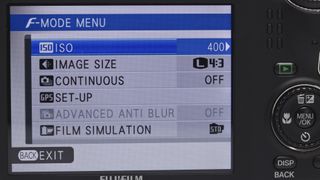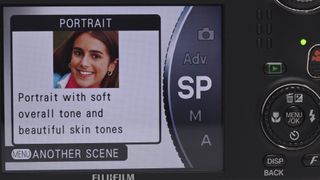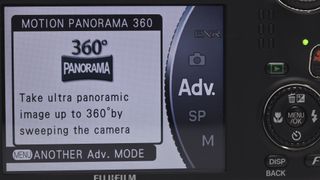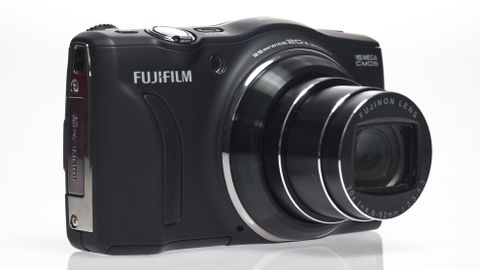Why you can trust TechRadar
In use, the Fuji FinePix F770 EXR compares favourably to the competition. It's quick to start up, and shot-to-shot times are about on a par with other cameras in this category. Switch to continuous shooting, however, and you can choose from 3, 5 or 8fps at full resolution, or if the action kicks it up a notch there's an 8MP 11fps setting available too.
Stick to shooting JPEGs at the slower speeds and you should be able to keep things moving, although if you're recording raw files, expect performance to slow down noticeably in this respect.
The AF system is responsive and largely accurate, with some inconsistencies only cropping up when the light begins to fail, but this can be remedied using the bright AF Assist lamp for photographing subjects at close quarters, and/or employing the flash for slightly more distant ones.

The usual Centre, Multi, Continuous and Tracking AF modes are present - the only additional one we would have liked to have seen is a customisable setting that enables you to pinpoint the focus area.
At low ISO sensitivities, images are sharp, faithfully coloured and pleasingly detailed, with the camera's built-in sensor-shift image stabilisation feature doing a decent job of counteracting camera shake when shooting at telephoto focal lengths and/or in low light.
Fuji's popular Film Simulation modes make a welcome appearance in the F770 EXR's feature-set, enabling scope for customising the look of your images in-camera. With many harking back to Fuji's 35mm film stock, it's possible to create some distinctive-looking shots without any PC-based post-processing.

The options include Standard, Velvia (more vibrant colours), Astia (a softer effect), Black and White and Sepia. Each imbues images with a unique aesthetic and adds to the camera's overall appeal in terms of the level of creativity it affords.
The Fuji FinePix F770 EXR's metering and Auto White Balance systems both produce favourable results with a respectable level of accuracy. The only area where image quality can be a little less impressive is when you start to push the sensitivity above ISO 400. ISO 800 shows a fair degree of noise and a general loss of sharpness and detail, with the effect worsening beyond this point.

Although images shot at up to ISO 800 remain usable for average-sized prints, the top native settings are better suited for web output/smaller prints, and the top two expanded settings are best left alone.
But performance in this respect can be improved if you flick the mode dial round to EXR. This employs Fuji's innovative switchable sensor technology, whereby the camera analyses the situation and adjusts its settings to prioritise either dynamic range, high resolution or low-noise.
To do so it halves the resolution, but the sensor combines two pixels for every on-screen pixel to provide double the amount of image data and consequently improved results.


